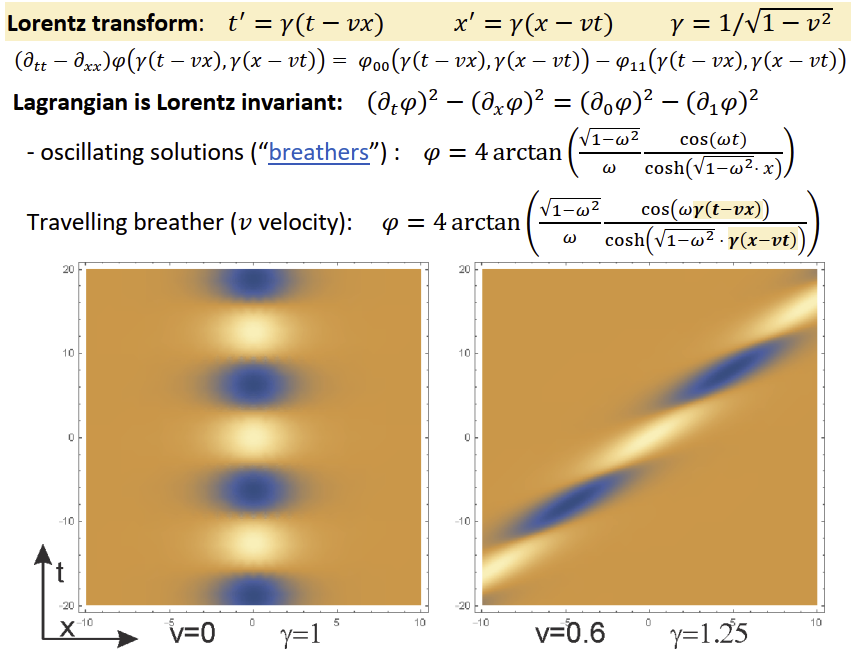Good. So you have no problem with the inverse LT being applied to (x', t') = (-17.32, 20) in order for him to conclude (x, t) = (0, 10) so that he concludes that when he is 20 years old, she must be 10 years old.
... but questioned what if B didn't reverse.
There is a difference in knowing and speculating.
You are using ideal scenarios where nothing goes wrong. After the experiment is verified successful, you claim measurements were not necessary, even though you had to have coordinates to calculate!
In real world scenarios, after experience departs from prediction, analysis is necessary for corrections/revisions.
In Einstein's original paper, he defines light transit time to be equal out and return, just as for a rest frame. The local time the observer assigns to the distant event is 1/2 the round trip time. How do you know that without an emission and detection?
You yourself applied the LT to (x, t) = (34.64, 40) in order for her to conclude (x', t') = (0, 20). You assumed a constant velocity v, just like I did. Everyone does. Constant v is in all basic SR thought experiments.
It is the same thing with applying the inverse LT to (x', t') = (-17.32, 20) in order for him to conclude (x, t) = (0, 10). Constant velocity v is assumed, just like all basic SR thought experiments.
Taking another look at the original 'twin' triangle, the LT cannot apply to a discontinuous motion. The outbound and inbound segments aren't long enough to record the history of the at rest twin. The only answer in that case is each counting the time signals from the other.
Wrong. Let me explain, and you will see:
Let there be two very long trains passing close by the location where the twins will be born. The velocity of one train is v=0.866c and the velocity of the other train is v=-0.866c. So their speeds are equal, just in opposite directions. Let both trains be filled with clocks which are Einstein-synchronised long before the twins are born.
Let the coordinates of the twins' birth be (x, t) = (0, 0) which also happens to be (x', t') = (0, 0) in both of the trains' coordinates. As soon as the twins are born, the male twin is thrown onto the train with velocity v=0.866c and the female twin is kept in place where she was born.
Whenever she is celebrating a birthday, they take a picture of her at the party. In the background of the picture, there is always a train clock displaying a time that is twice her own age. So when she is 10, there is a train clock in the picture displaying 20. When she is 70, there is a train clock in the picture displaying 140, etc.
Now, the traveling twin is living on the train, and he learns about SR from his tutors. They teach him that he and his twin sister are in an ideal SR scenario, that she is the "stay-home twin", he is the "traveling twin" and there are two trains going in opposite directions so he can do a round-trip to get back to her. He learns and understands that his twin sister's current age can always be obtained by looking at the clock in his train car, and dividing by 2.
When he is 20 years old, he looks at the clock in his train car, and it displays t'=20. He knows SR says his sister is 10 at that time. He knows they phtograph her every birthday, so later when he gets back to her, there should be a photograph showing her celebrating her 10th birthday. Knowing that the trains are very long in length, and that their velocities are constant, he predicts that in the background of that photo there will be a train clock displaying t'=20. If he sees that train clock displaying t'=20 in her 10th birthday photo, he will use it as proof that this prediction of t'=20 and t=10 was correct.
So, at 20 years old, he decides he wants to go back to her. He jumps from one train to the other. When he lands in the other train, he looks at the clock on the wall, and it says t'=140. He calculates that his twin sister is now 70 years old instead of 10. He rides the train back to her, during which time he ages from 20 to 40 years old. He arrives to find that she is 80 years old, just as he learned in his SR classes.
She shows him a picture of her 10th birthday, with a train clock in the background displaying t'=20. He tells her he predicted she was 10 at that time, and that is proof that he was correct. She also shows him a picture of her 70th birthday, with a train clock in the background displaying t'=140. He tells her he predicted she was 70 at that time, and that is proof that he was correct. They take a current picture of them together, which is her 80th birthday. In the background of that photo is a train clock displaying 160.
And we all lived happily ever after.







